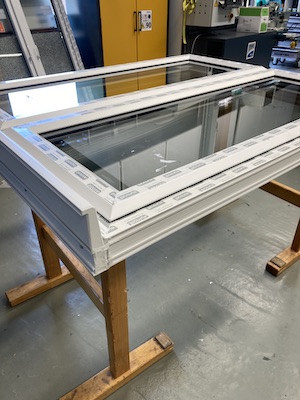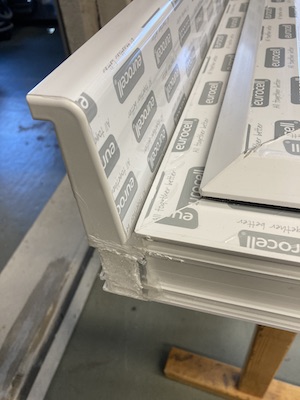To meet the demands and regulations of an environmentally sustainable future, take a ‘fabric first’ approach.
 Sustainable standards are more important than ever. The growing consciousness concerning the environment is reflected in modern building regulations, such as the Future Homes Standard, expected to come into effect this year.
Sustainable standards are more important than ever. The growing consciousness concerning the environment is reflected in modern building regulations, such as the Future Homes Standard, expected to come into effect this year.
As we know, not all materials are created equal in terms of conserving energy and regulating temperatures in a building. At H+H, we support a “fabric first” philosophy. This means that we believe thermal efficiency should be built into the fabric of a house, so it remains effective for the lifetime of the building. Choosing aircrete ensures the building will benefit from high energy efficiency for years to come.
Thermal efficiency and U-values
 Aircrete has a low rate of heat transfer through a structure (U-value) and is highly thermally efficient. The temperature in buildings constructed with aircrete is well regulated, keeping the heat in during cold winter months and the heat out on hot summer days. This reduces the energy used to control the temperature with systems such as central heating, resulting in a lower carbon footprint for the building.
Aircrete has a low rate of heat transfer through a structure (U-value) and is highly thermally efficient. The temperature in buildings constructed with aircrete is well regulated, keeping the heat in during cold winter months and the heat out on hot summer days. This reduces the energy used to control the temperature with systems such as central heating, resulting in a lower carbon footprint for the building.
One standard being encouraged in the move towards an energy efficient future is Passivhaus. Passivhaus is a voluntary standard for energy efficiency, which reduces the building’s ecological footprint. To achieve Passivhaus certification, a build must be airtight, and have an extremely low U-value.
H+H aircrete can be used for airtight construction, and its high thermal performance helps to meet stringent Passivhaus requirements, making it an ideal choice for energy-efficient building projects seeking the Passivhaus stamp of approval.
New standards of energy efficiency regulations are expected this year in the Future Homes Standard (FHS), which based on the current information available, we anticipate H+H aircrete will surpass.
Compatibility with heat pumps
Another key expectation set out in the Future Homes Standard is the requirement for new homes to be ‘zero-carbon ready’, meaning no work will be necessary to allow them to achieve zero carbon emissions when the electricity grid is fully decarbonised.
 To achieve this objective the government encourages the use of heat pumps as the primary source of heating for houses as they are efficient and low carbon, and are less expensive to run than alternative electric heating systems.
To achieve this objective the government encourages the use of heat pumps as the primary source of heating for houses as they are efficient and low carbon, and are less expensive to run than alternative electric heating systems.
Heat pumps work most efficiently if the home is well insulated. Constructing a building’s fabric with products that have a high U-value, indicating they are not very thermally efficient, can hinder the effectiveness of a heat pump. This is far from ideal, particularly given the significant initial investment required to install a heat pump. Aircrete’s high thermal efficiency makes it an ideal material for constructing homes that incorporate heat pumps, allowing them to perform to their full potential.
Long term thermal efficiency
While houses built today must have a minimum life expectancy of just 60 years, H+H aircrete has a lifespan of over 100 years.
This longevity means the benefits of aircrete, specifically its thermal efficiency, will last long into the future, continuing to require reduced heating and cooling demands for decades, making it a sustainable choice for future-proof construction.
Choosing aircrete for construction projects contributes to energy savings, supporting long-term sustainability goals. As we move towards a future where energy efficiency is paramount, materials like aircrete will play a crucial role in shaping buildings that are not only comfortable and cost-effective to maintain but also kind to the environment.
To find out more visit www.hhcelcon.co.uk or contact us on 01732 886444 or email info.uk@hplush.com























